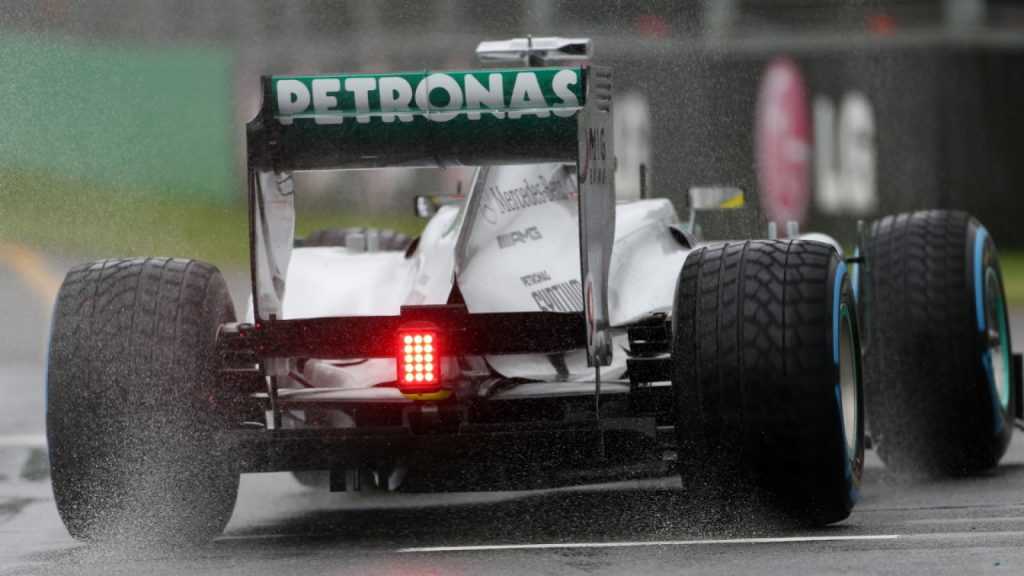The only things common between an F1 and your regular car is the steering wheel, the four wheels, and the engine. The Formula One cars have a limited lifespan and therefore designed keeping in mind a powerful performance. These get pushed to the limit and often need a constant change of parts. These cost millions owing to so many costly components, which are a bit hard to find on the regular automobile market. However, the one question that baffles lovers of the F1 race is why F1 cars do not have brake lights.
Contents
Overview Of F1 Cars To Find An Explanation
Here are the impressive numbers:
- F1 cars from 2014 to the present use a 1.6 V6 engine, maximum cylinder diameter of 80 mm, piston stroke of 53 mm, DOHC dual cam, 24 valves (4 valves/cylinder), using a turbocharger, and direct fuel injection. Engine capacity reaches 850 horsepower at 18,000 rpm with 160 horsepower generated from the ERS (Energy Recovery System) energy recovery system, torque of 400-500 Nm.
- Maximum speed reaches 360 km/h. The car’s turbocharger is hybrid, consisting of a high-speed turbine and an electric compressor. The car uses an 8-speed gearbox. F1 racing cars can accelerate from 0-100 km/h in about 2.4 seconds, 0-200 km/h in 4.4 seconds and 0-300 km/h in about 8.4 seconds.
- F1 engines can take in about 450 liters of gas per second, fuel consumption is about 75 liters/100 km. The fuel used for F1 cars is not much different from that used for family cars, but racing teams have different mixing methods to increase engine performance.
- On the F1 track, there are times when an F1 car can operate at a speed of more than 300 km/h and must decelerate very quickly. Therefore, carbon disc brakes, tires, and aerodynamic design play a very important role. Within 4 seconds, the F1 can reach a speed of 160 km/h from a standstill and come to a complete stop.
Because racing cars run at very high speeds, if there is a brake light signaling, the driver behind cannot react in time!
Watch more:
Why F1 Cars Don’t Have Brake Lights?
It might be a bit helpful to know that the manufacturer designs the F1 vehicles keeping in mind the need to create superfast downforce suction from the air below the car floor. The downforce works like a vacuum, which pulls the car onto the road, as the driver moves it on the course at straight-line speed.
The driver needs to lift their foot from the accelerator pedal to reduce the car speed. Drivers learn to slow down the car sharply, depending on the car model. It is what keeps the cars from colliding at every turn, especially when the driver is following another vehicle or moving in packs.
According to the ex-F1 driver and commentator, Martin Brundle, it is one of the most commonly asked questions. You can search online to get the best industry knowledge about recent automobile models.
The difference that people easily notice between F1 cars and normal cars is that F1 cars do not have brake lights. So why is there this difference? Let us now understand the reasons as to why F1 cars don’t have brake lights.
It is dangerous
Martin Brundle said that placing brake lights on the F1 cars is not only unnecessary but also dangerous. By the time another F1 driver following you on the racetrack notices and reacts to these lights, they would ram the vehicle into the car in the front.
Unfortunately, there is no mechanism built to get the driver’s reaction in time to take any evasive action depending on when the brake lights come on. It also includes putting the brakes on time.
Read more:

Reaction time of the driver
During an F1 event, the car drivers try to keep each car alongside or in front of their field of vision. They need to learn to hit the brakes using their intuition, which depends on the slight changes in the perceived size of the car in the front or on their sides.
On the other hand, the perception of size change at shorter distances requires a quick reaction from the driver, as they learn it during the training sessions. Although each driver knows what the red light denotes, it still creates a small delay in timely reaction at such high speeds.
Orange alternative
The F1 cars have an orange light on their backside, which blinks to let the driver behind know that the one in the front is charging the battery system. It means they are readying the electrical power for the hybrid engine, which will convert heat and wheelspin to electrical energy.
The situation is more common at the end of a long straightaway. The generation of power leads the car to a drag, which the following vehicle would not be able to see unless it is too late. The orange light is present to let the drivers know about the deceleration of the car ahead.

Endnote
During an F1 event, especially during rains, the default brake lights on the F1 cars also work as a brake warning light, as the vehicles can lose sight of each other down the track. It helps the driver keep the car at a particular distance, and at the same time, keep them aware of the cars ahead.



